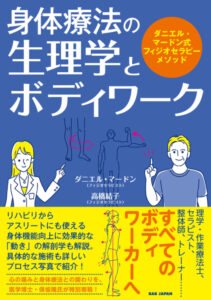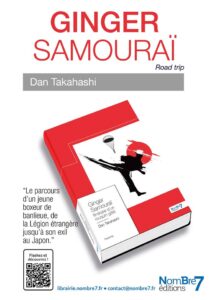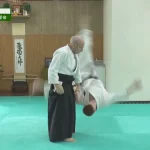【Exploring the spirit of the Ryukyu】Series 10 (HIDEN 02/2024)「Higaonna Morio SENSEI」
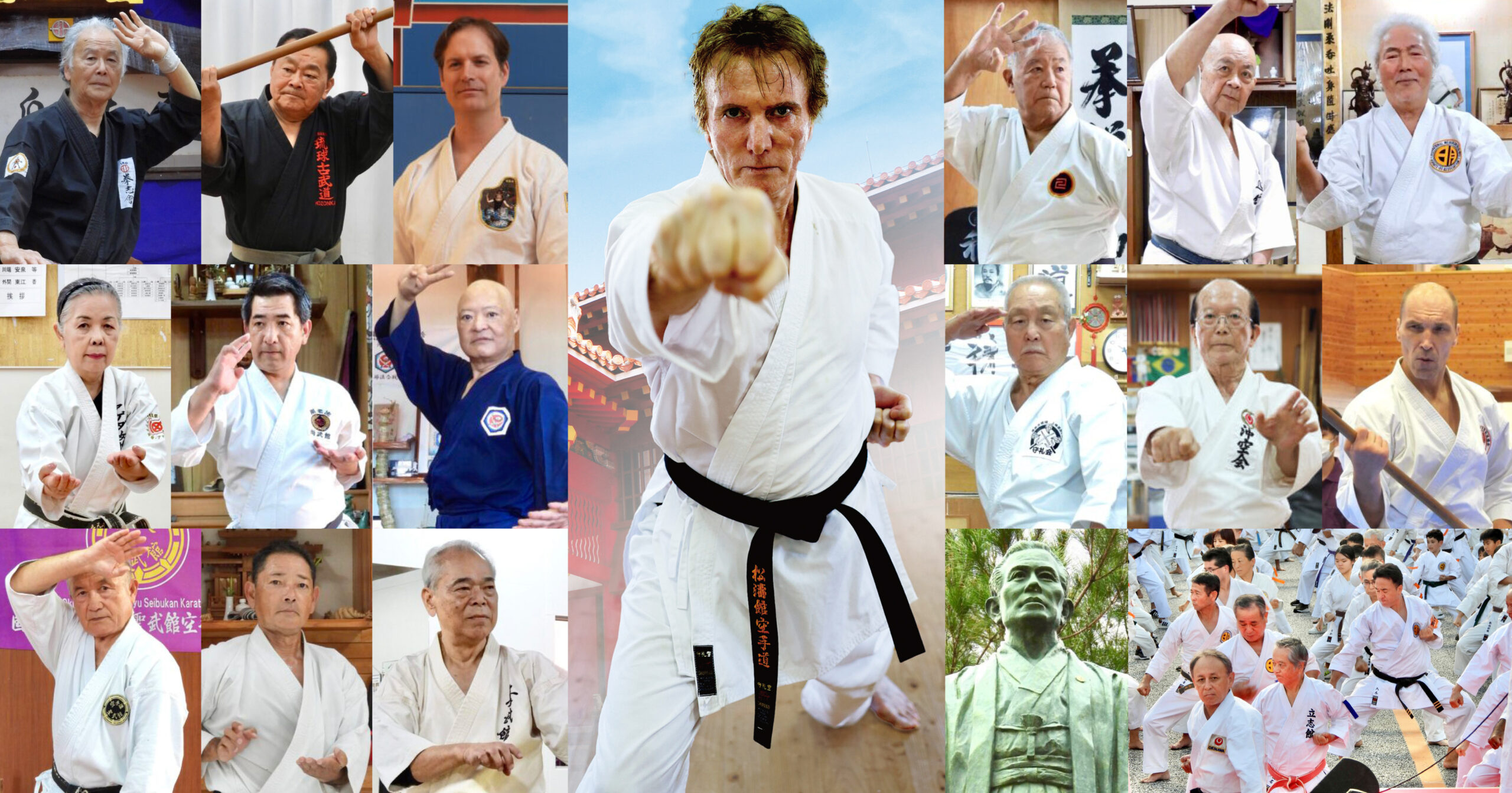
【Exploring the spirit of the Ryukyu】Series #10 (HIDEN February 2024)「Higaonna Morio SENSEI」
Interview/Writer: Daniel Mardon
Photography/translation: Yuko Takahashi
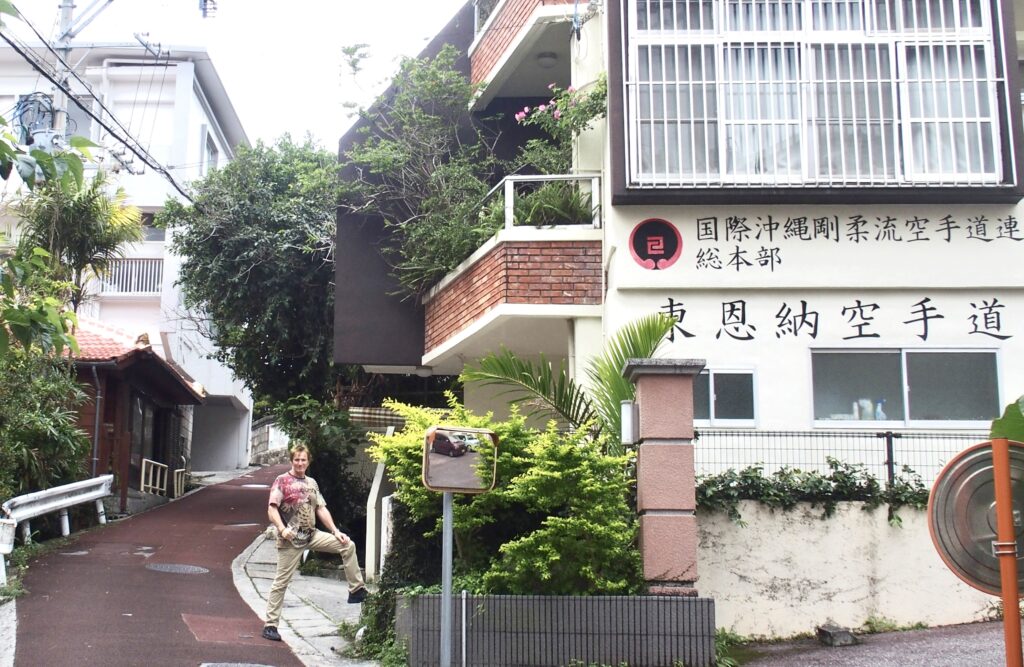
Higaonna Karate Dojo, the headquarters of the Traditional Okinawan Goju-Ryu Karate Federation, is located in a residential area on a slope in the Tsuboya district.
The first place we are visiting at the beginning of this new year is the traditional Okinawa Goju-Ryu Karate Federation headquarters, also more simply called “Higaonna Karate Dojo”. It was opened in 1982 by Higaonna Morio Sensei; a legend in Karate, who has been active outside of Okinawa for many years.
Higaonna Sensei has taught for 20 years in Tokyo at the famous “Yoyogi-Dojo” and 15 years in the United States.
He was granted the prestigious title of “Intangible cultural heritage holder” by Okinawa Prefecture. In other words, we qualify such persons as “Living human treasures”…
The Dojo is located on a pretty steep slope in the Tsuboya district, which has a history of over 300 years. It was referred to as “pottery town” since the best artisans practicing this art were regrouped in this area. It is very close to Yogi Park, where the young Higaonna Morio used to practice Karate.
“First of all, let’s talk about the history of Goju-Ryu!” says Higaonna Sensei after greeting us and seeing us looking at the photos displayed in the Dojo.
Everything started with Higaonna Kanryo Sensei (1853-1915), who went to the Chinese Province of Fujian at the age of 15 to avenge his father’s enemies and to study under the Chinese Martial Arts Master Lulukou. It is said that by the time he became a Master of Martial Arts, his desire to take revenge on his enemies had disappeared. He then returned to the Ryukyu and became a Master of Naha-Te for which he is considered to be the leader. It is only in 1930 (15 years after Higaonna Kanryo Sensei’s death), that his disciple Miyagi Chojun (1888-1953) founded the Goju-ryu, which became the first school in the Karate world to use the word Ryu (style).This started the establishment of categories of Karate groups which are named “Ryu-Ha”. Miyagi Sensei named his martial art “Goju-Ryu” from the Kenpo-Hachiku (拳法八句; the eight Poems of Kenpo contained in the Bubishi 武備誌) by choosing 2 words from the 3rd Poem (法剛柔吞吐 hou-ha, go, ju-wo, don, to-shi).
Miyagi Anichi Sensei (1931-2009) was the only Goju-Ryu successor who trained as an apprentice with Miyagi Chojun Sensei after the war. Since he was the Shisho of Higaonna Morio Sensei, we are going to learn a lot about him.
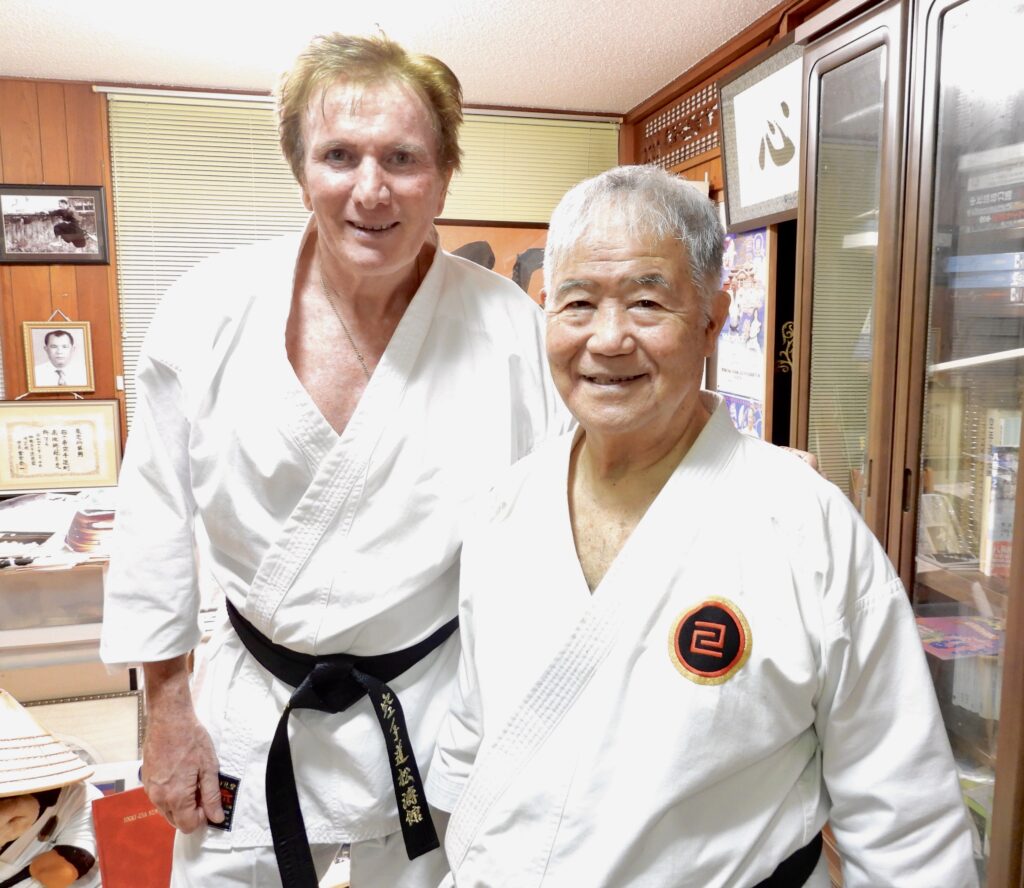
Higaonna Sensei (right) and Daniel Sensei in the museum room on the third floor of the Dojo. In addition to numerous documents, photographs, and award certificates, there was also a bronze statue personally presented to him by John Lennon.

Yuko Sensei has become an Ambassador of Karate.

Karate magazines from all over the world, including France (above)

Morio Sensei opens his archives.
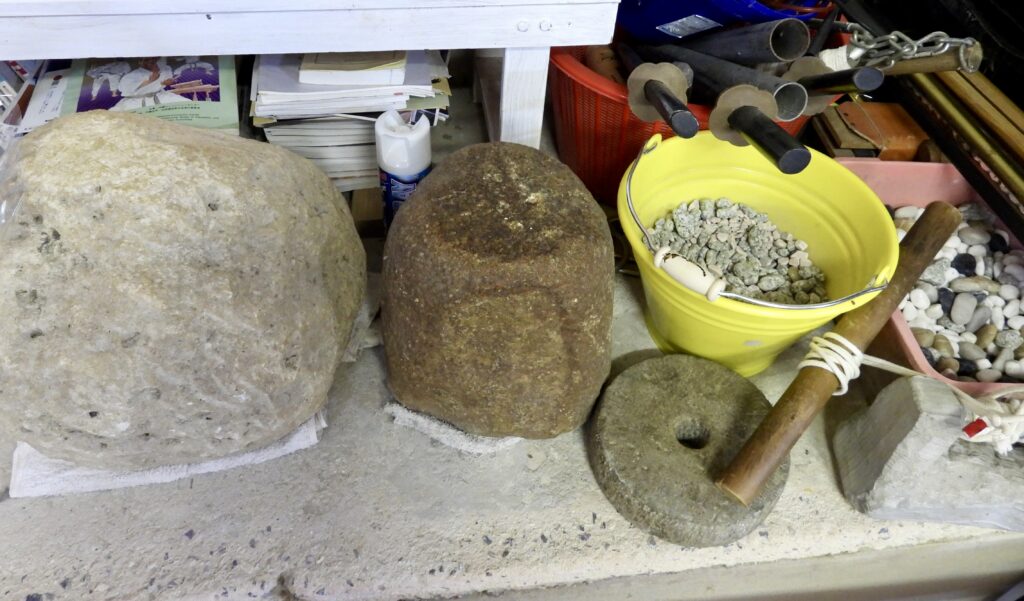
Various original exercise equipment. The gravel that strengthens the fingers for “Nukite” and the stones that strengthen the fists, wrists, and arms, have been rounded by years of training.
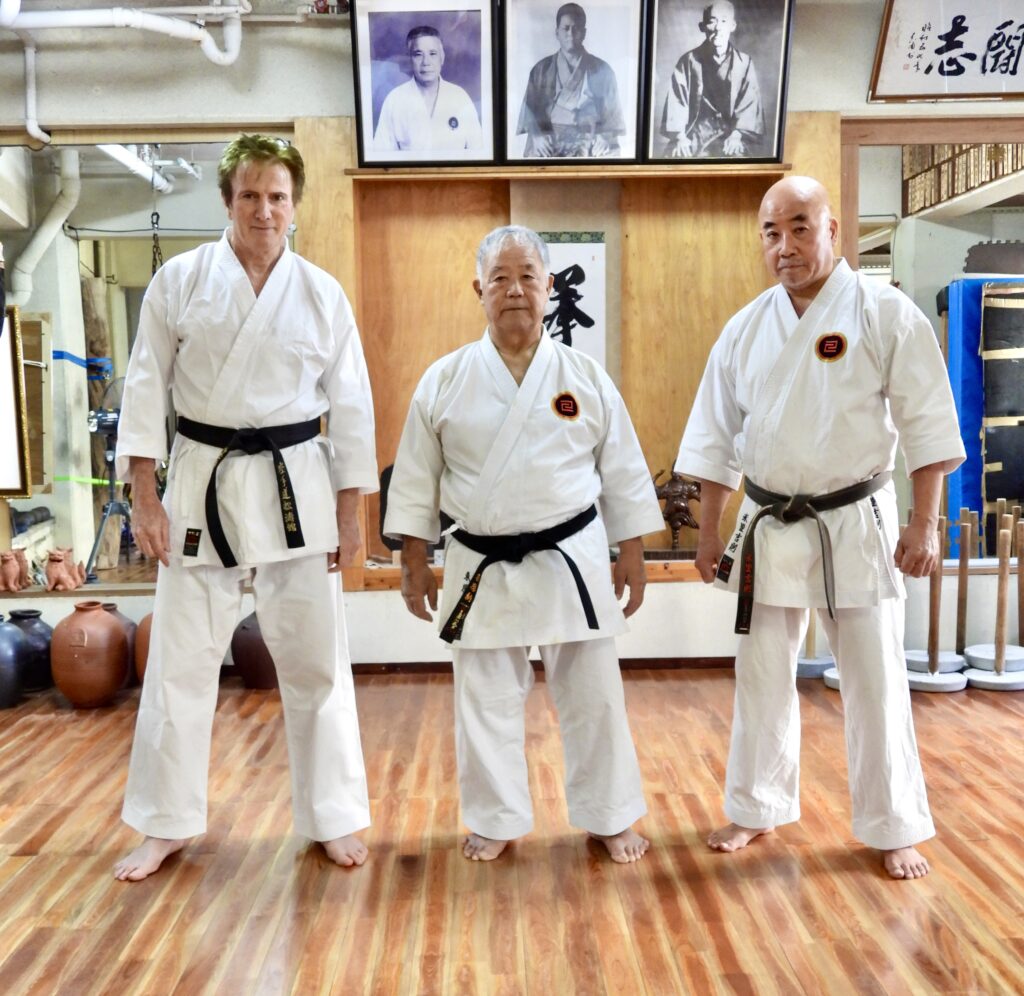
With Higaonna Sensei and Yonesato Hanshi.
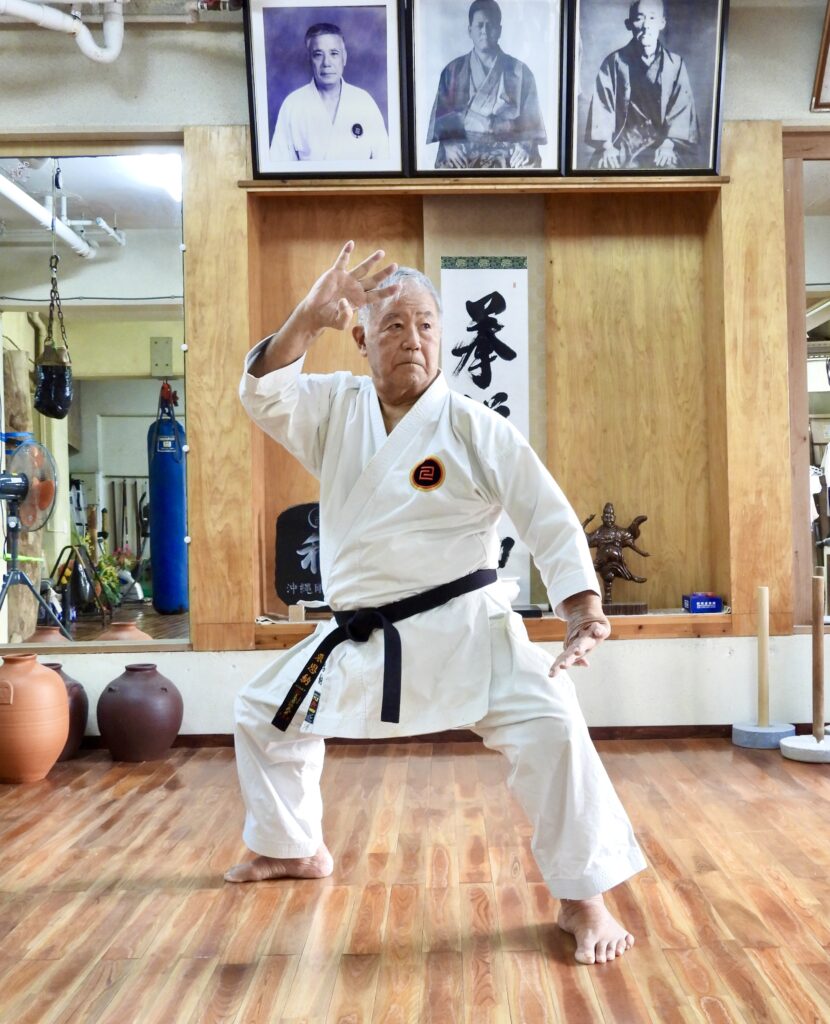
BIOGRAPHY of Morio Higaonna:
Chief instructor of the Traditional Okinawa Goju-ryu Karatedo Federation.Designated “Intangible cultural heritage holder” by Okinawa Prefecture.沖縄県指定無形文化財保持者Born December 25, 1938 in Naha City, Okinawa Prefecture.Official instructor of the authentic traditional Okinawan Goju-Ryu Karate.
Still active as a teacher.
He taught Karate at Yoyogi Dojo in Tokyo for 20 years (1961-1981) and also in the U.S.A. for 15 years. He is widely known not only in Japan but also overseas (mainly in the U.S.A., Europe, Russia, and Asia), as the foremost expert on Okinawa Goju-ryu.
(1-) How did you start karate?
Ever since I was little, I was a boy who hated meeting people, hated talking, hated studying, and instead of going to school, I loved swimming in the sea at Naminoue Shrine. It was my school (lol).
Even though I was mentally weak, my father often took me with him saying, “Morio, let’s go watch Karate at the Naha Theater.”At that time, there was a big monthly Karate-Kata event at the Naha Theater, and my father would take me there.(It was located here in Tsuboya) From the first time I saw the demonstration, I was moved and thought, “Wow, how powerful..!” and I decided soon to learn Karate. My father was a police officer who was practicing Shorin-ryu (小林流 Kobayashi-Shorin). He is the one who led me to Karate.
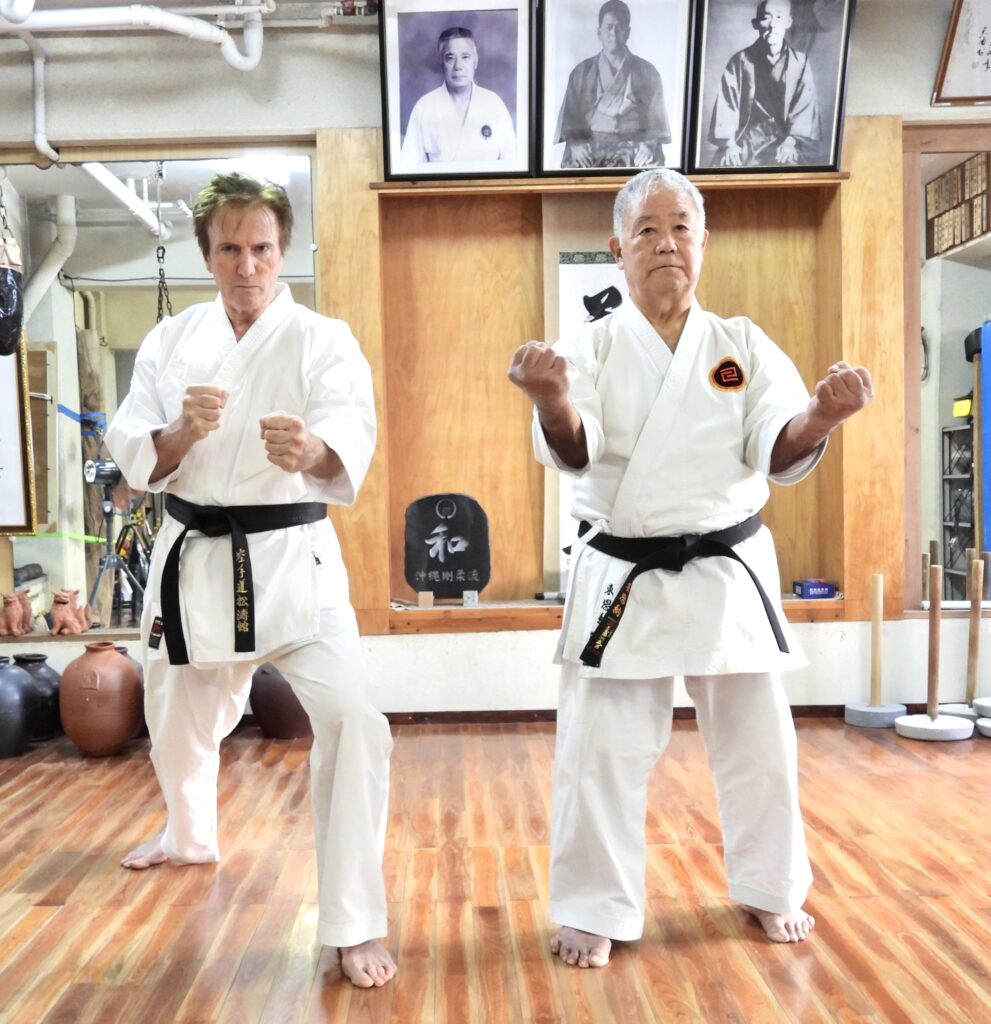
Two different stances. Higaonna Sensei (right) of Goju-Ryu and Daniel Sensei of Shotokan-Ryu.
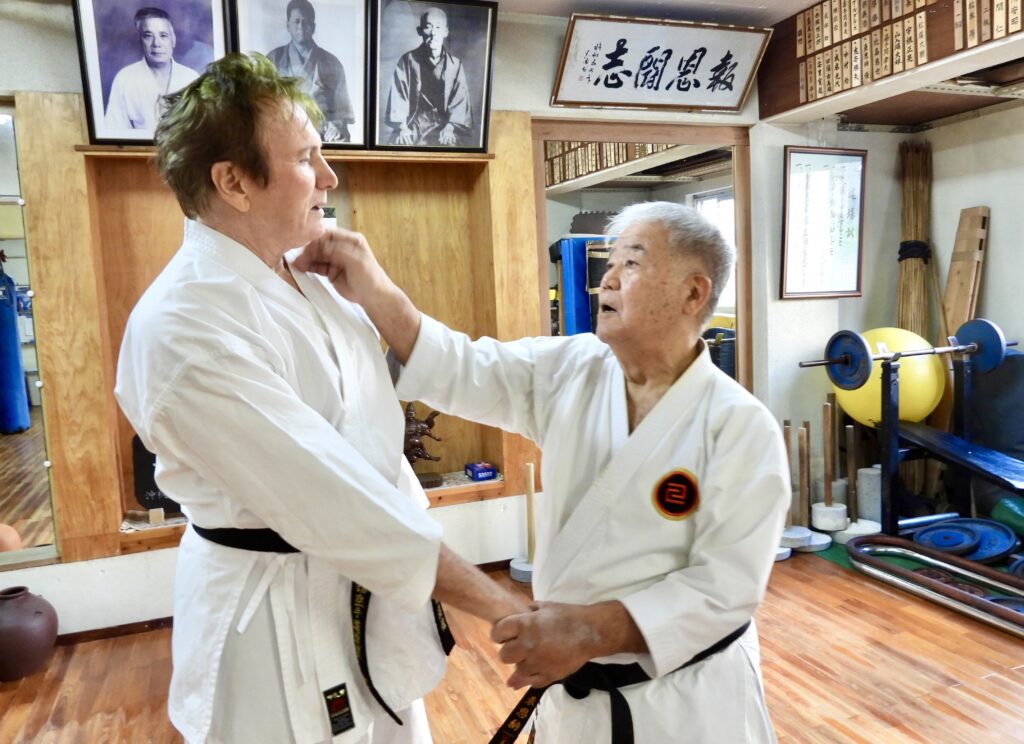
Demonstration of “Nukite” by Higaonna Sensei. The fingertips are aimed at the top of the collarbone.
(2-) What are the characteristics of your school (Dojo)?
(Morio Sensei modestly) Oh, there is nothing special about it…
──Could we say that the Sensei is Jyu (soft), but the classes are “Go” (Hard)…?
(Morio Sensei) Of course the teacher is nice (lol). Of course, the training is tough. I am never satisfied. So it’s tough. Karate-Keiko (稽古 Karate-Practice), again and again…
My class starts with Keiko and ends with Keiko. If the teacher is not satisfied, he will never say “good”! Therefore, the students are not satisfied either, because they want to hear “Good” for feedback. So maybe we can say this could be the characteristic of my Dojo.

The famous wall on which the 3 levels Jodan, Chudan & Gedan are hit by Higaonna Sensei for decades, so that the color of the walls has changed.
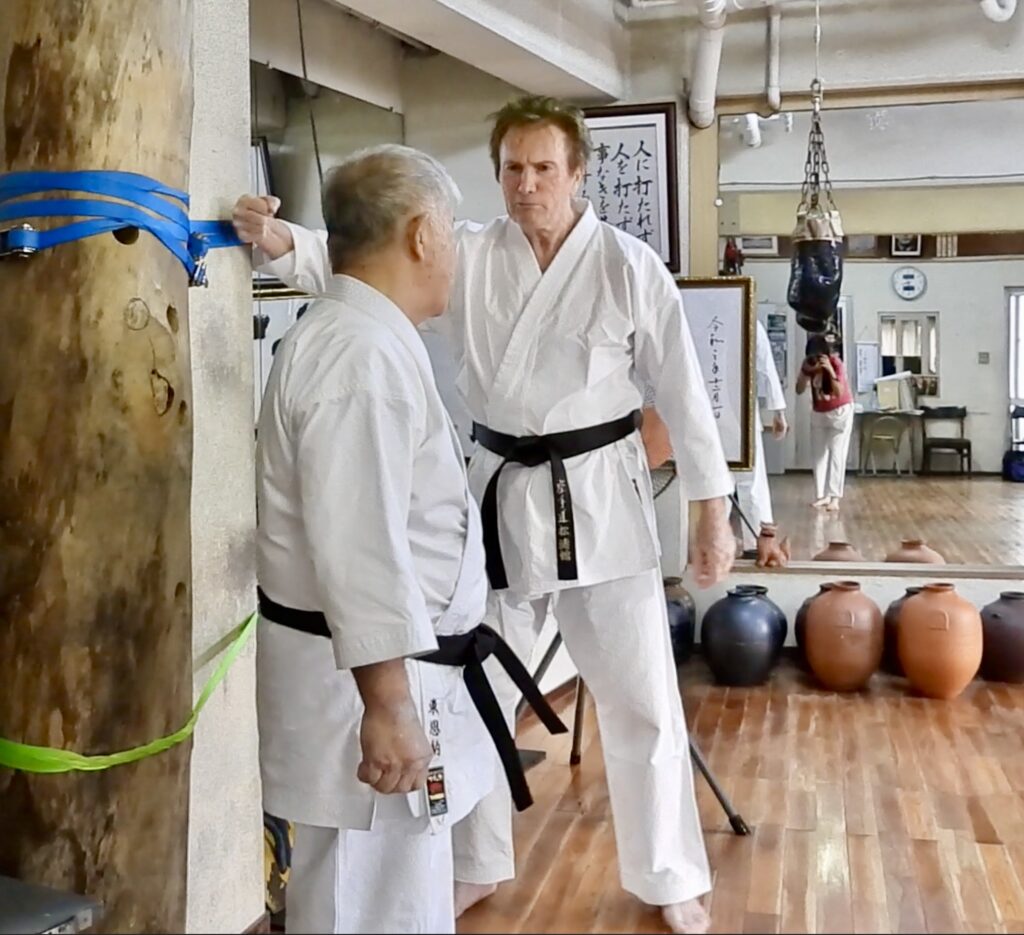
Higaonna Sensei joking with Daniel Sensei starting hitting…“This side of the wall is softer than over there!”

Hitting the legendary wall with Yonesato Hanshi.
(3-) What is your favorite Waza and Kata?
I was never satisfied with my Kata.I like all the Kata. I love Bechurin which is also called Suparinpei, but my Shisho never called it Suparinpei. I like Seisan too.
(4-) What is your most impressive memory of your Sensei/(Shisho)?
My Shisho/Master is Miyagi Anichi. I started training seriously at a Dojo about two years after Miyagi Chojun Sensei passed away, and Anichi Sensei taught me Goju-Ryu in great detail. My memory is of hearing him keep repeating “One more time”, “One more time” and “One more time”…! The more I did it, the more my Sensei said; “Higaonna-kun, your “Muchimi” (むちみ) is not good enough! Same with the Kata; “One more time!”, “One more time!” “Higaonna-kun, you’re not good enough at Kata…. Mo ichi do! (One more time) mo ichi do! “Yes, repeat one more time…!” The Sensei was never satisfied, so I couldn’t be satisfied either! He corrected me just by saying “It’s not like this!” and made me repeat it. I really thought that “Karate is Mugen!” 無限 (has no limit). Anichi Sensei’s teacher was Miyagi Chojun Sensei, and he told me that Chojun Sensei’s body movements were amazing. He was so impressed that he couldn’t describe it with words. He just said; “Higaonna-kun, watch me, this is the way Chojun-Sensei did it”. He also said; “When you practice, think about the past! Think carefully about the Kata that the Sensei created back then and practice until your body moves automatically.” Like most Sensei of that time, Aichi Sensei was teaching in Uchinaguchi (Okinawa’s language). He was such a kind teacher that he would tell after the class; “Morio, let’s go eat Okinawa soba!” Despite the fact that I have lived in Tokyo and in America for a long time, I have always maintained a strong relationship with my Shisho by returning to Okinawa to visit him and by inviting him to my Dojo.
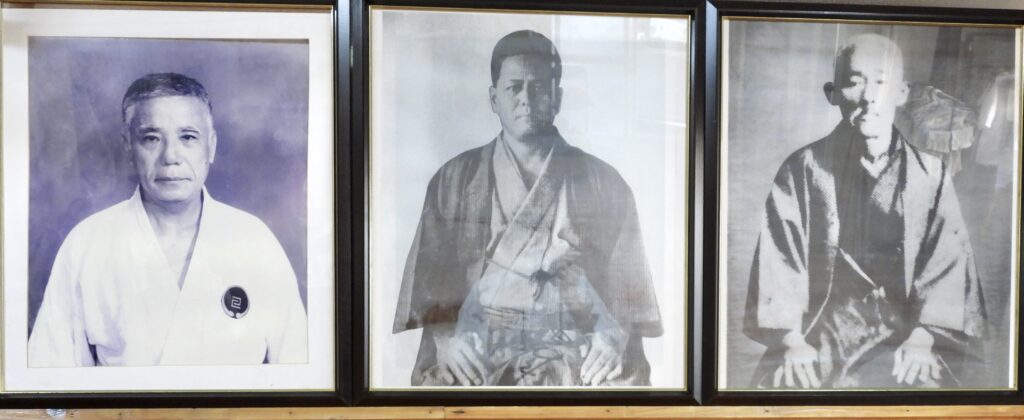
Above the altar in the Dojo are photos of Anichi Miyagi Sensei (left), Chojun Miyagi Sensei (center), and Higaonna Kanryo Sensei (right).On the 1st and 15th of the lunar calendar every month, Higaonna Sensei offers tea and incense sticks to express his gratitude.

Morio Sensei has a lot of passion for Karate.
(5-) What is the difference between Okinawa Karate and mainland Karate?
Mainland focuses on competition Karate, but it is happening here in Okinawa too! Karate has recently become a sport with competitions. However, we still have a strong Karate tradition here in Okinawa and there are teachers and Dojos that continue to teach under our traditions. My students and I continue to uphold traditional Karate.
Competition is a fight against other people. Traditional Karate is a battle with yourself. It is not intended to compete with others.
(6-) Do you often teach to foreigners?
Yes, I have many foreign students. I teach people from 80 countries around the world. Students from overseas train hard at this Dojo throughout the year. I have traveled to many cities to teach in the United States, France, Germany, Russia, Moldova, Mexico, Venezuela, and more.
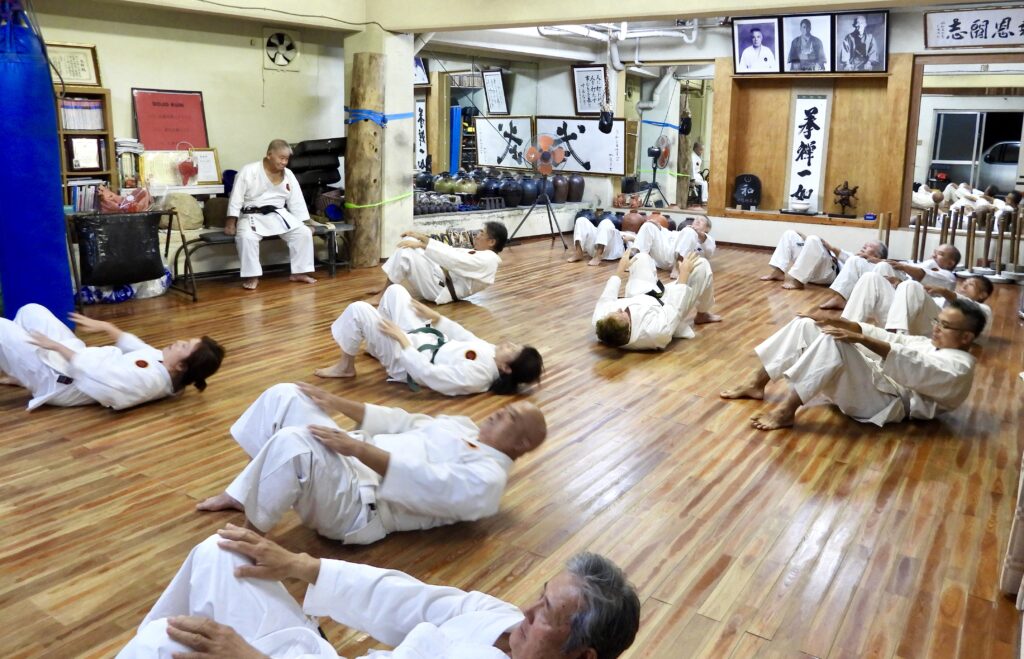
Higaonna Sensei instructs his students to strengthen their abdominal muscles through sit-up exercises.

Good laugh with Uehara Hanshi.
(7-) What do you think about the globalization of Karate?
What I felt when traveling to countries around the world was that people accepted Karate as it is, even if the languages, religions, and lifestyles were different. Sakiyama Sogen Roshi of Kozenji Zendo, who passed away last year at the age of 99, had learned Karate from Miyagi Chojun Sensei at the Shihan school (a famous old system school for training teachers.)
When Sakiyama Sogen Sensei was 85 years old, he made one calligraphy for me about the “Wa” 和 (see the different meanings below) and one about the “Kenzen Ichinyo” 拳禅一如, which means that Karate and Zen are the same.
Traditional Karate is a martial art that brings peace to people’s hearts. If “Wa” 和 spreads around the world along with karate, the world’s prosperity will be even more wonderful.
Note: Meanings of “Wa” 和 in kanji
1) To get along well, to have a relationship of mutual respect and mutual support.
2) Stop fighting and make peace.
3) Japan. Japanese. Japanese style.
4) Calm, peaceful.
5) Number obtained by adding two or more numbers.
Pronunciation:
on-yomi: wa, o, ka
kun-yomi: yawa, nago, na, a
(8-) What do you think about Karate becoming a competitive sport, including the Olympics?
I think it’s good to have a goal. However, when the time comes, I would like people to learn martial arts Karate and explore ways to improve Shin-gi-tai 心技体 which means Kokoro(mind), Waza (technique) and Body.

Hard push-ups challenge that I won…
(9-) What does today’s Karate mean to you?
Martial arts Karate is for training our mind. Also, it serves to protect ourselves, not to defeat our opponent. It has a very deep meaning. Anichi Sensei always talked about Chojun Sensei’s philosophy in Okinawan language. “Remember, never start or touch someone first! When someone attacks you, just respond with “Uke” to the attack. Don’t hesitate to block, but that should be all.” Regardless of the Ryuha, all Kata begin with “Uke”… The saying “There is no first move in Karate” was popularized by Gichin Funakoshi Sensei, but it is a motto that has existed in Okinawa since ancient times. In reality, “Uke” is just as strong as an attack. Morio Sensei believes that blocking can be both a defense and an attack and can be devastating enough to stop a fight. (Morio Sensei shows me how to give the strongest gedan-barai)
I realized that Kata is a battle against myself when I had forced myself to do all Kata 100 times and Bechurin 108 times every day for three months. For Bechurin, it took 6 hours and 10 minutes each time.Then, I started to realize my weaknesses, such as my shoulder hurting, being tired and being hungry. I thought, “I see, this is what my Shisho was talking about…!’’ Knowing our weaknesses makes us stronger. This is a great lesson from Kata.
(10-) How do you envision the future of Karate?
A few Sensei and I are working on making traditional Karate accepted as a world cultural heritage in order to pass it properly on to future generations. As a “Cultural heritage holder”, I have a role to play in doing this. My Shisho Anichi Sensei always told me; “Okinawa Karate is a culture, so in order to pass it on to the next generation, never change a Kata, teach it correctly and teach the correct way of life.” Kata are filled with the wisdom of our ancestors. I hope that what I have inherited from my Shisho will be correctly passed on to my students, and that they will brighten the world of the future.
(11-) Do you have any message for the world?
In today’s world where wars and conflicts persist, I would like as many people as possible to learn traditional Karate.There are many Goju-Ryu Dojo in Russia and Ukraine, so I’m curious about what’s going on in the minds of the numerous students from there? I sincerely hope for peace.
(12-) What does “Karate” personally mean to you ?
It is my Kokoro (Soul), my treasure and my wealth.It is also a national prosperity.Practicing Karate is “ikigai” 生き甲斐 . The practice itself is the “Ikigai”.(The value of life, the reason to live, the pleasure of living, etc…)
Of course, there are times when I’m not satisfied, but I force myself and tell myself; “Do more, do more…!”
Continuing to practice Karate is my “Ikigai”.
Daniel Sensei conclusion:
Thank you very much, Higaonna Morio Sensei, you have the strongest fists and smile in the world! This is my 5th experience of practicing Goju-Ryu at the top and with the top Sensei and I can confirm that this Ryu-ha is tough and uses a lot of concepts of biomechanics and breathing techniques. This Karate form connects better to my profession of “Physiotherapist”…
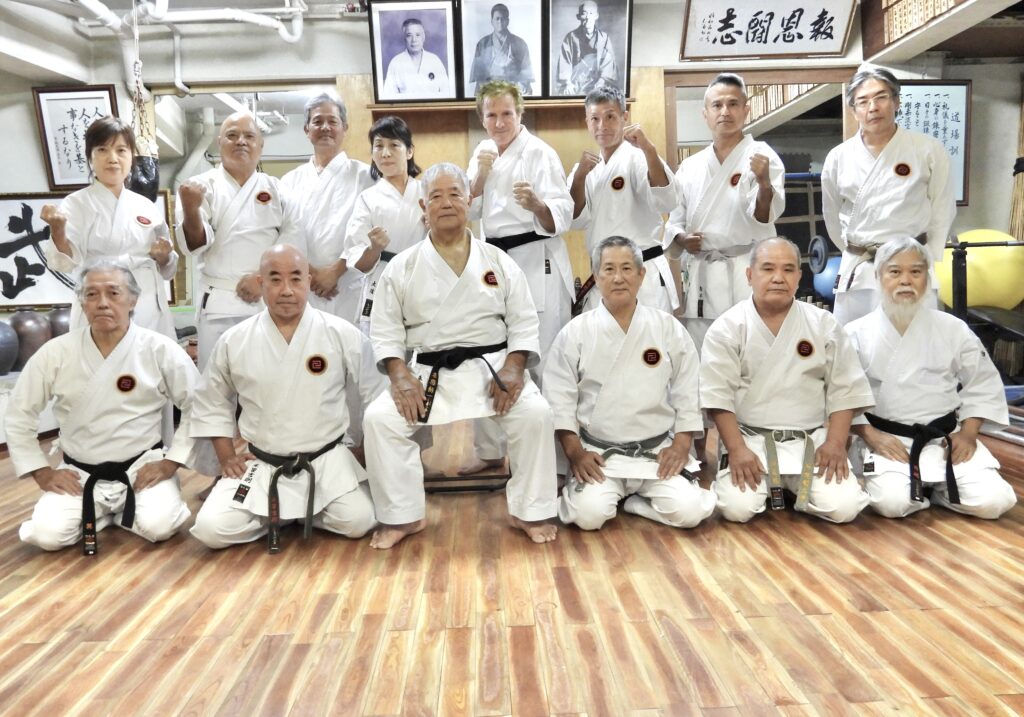
Members of the Higaonna Karate Dojo, the headquarters of the Traditional Okinawa Goju-ryu Karatedo Federation.
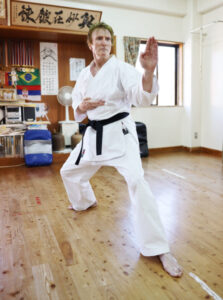
Daniel Mardon; the Karateka-Therapist
Creator of Aromapressure® method and physiotherapist with a valid US license, Daniel Mardon was born in Paris. One of his specialties is to teach and to perform lymphedema and subcutaneous tissue-damage care, after radiotherapy for cancer patients at medical institutions and subcutaneous tissue-circulation stimulation before and after surgery.
He was also a therapist for two famous soccer teams in Paris. Since 2005, he has focused on producing top-class hotel spas in Japan, as well as physiotherapy education and awareness-raising activities for health care professionals. Author of several books, among his major publications includes “The Physiology and Bodywork of Physical Therapy ” (Published by BAB Japan) and DVD “Daniel Mardon Aromapressure® Method ” (Pony Canyon). He regularly appears on television and radio shows, and has featured in numerous media publications.

